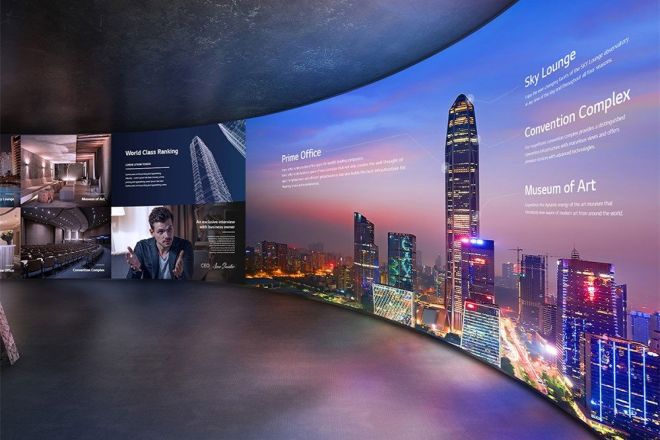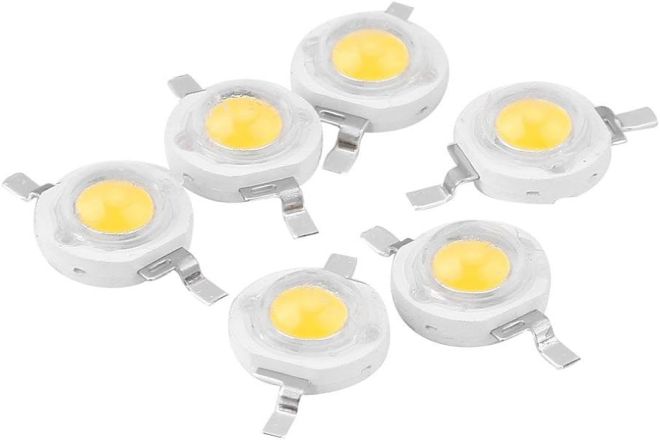Introduction

Today, with the increasing development of modern technology, LED (light-emitting diode) and its derivatives LED displays have penetrated into every aspect of our lives, from home lighting to urban landscapes, from TV displays to outdoor advertising, showing their effects everywhere.
Charm. However, although LED and LED displays are so common in daily life, many people do not know their differences. In fact, although LED and LED display screens are closely related, there are obvious differences in concepts, characteristics, application fields, etc. In order to better understand the relationship between the two, this article will introduce and compare LED and LED displays in detail, hoping to provide you with a clear understanding framework.
1. Basic concepts and characteristics of LED

LED, this seemingly complicated name, actually represents the small and bright light-emitting components that are common in our lives. LED, whose full name is Light Emitting Diode, is somewhat similar to our common electronic components but has a very special function – emitting light.
So, how do LEDs emit light? The principle behind this is actually not complicated. We can imagine LED as a miniature stage on which electrons and holes are the two main “actors.” When current flows through this stage, electrons and holes meet and begin their “show.” During this process, they release energy, which is displayed in the form of light, so we see the light emitted by the LED.
LEDs have many features that make them stand out in the lighting field. First, LEDs are very energy efficient. Compared with traditional incandescent lamps and fluorescent lamps, LEDs can convert more electrical energy into light energy when emitting light instead of wasting it in the form of heat energy. This means that by using LED lighting, we can save a lot of electricity, save money for families and society, and also contribute to environmental protection.
Secondly, LEDs have a very long service life. Ordinary light bulbs may fail due to filament burnout or other reasons after a few months or a year or two of use, but LEDs can continue to shine for several years. This means that once LED lamps are installed, we don’t have to worry about frequent replacement of light bulbs, and we can also save the cost of replacing light bulbs.
Furthermore, LEDs are very environmentally friendly. It does not contain harmful substances such as heavy metals such as mercury, like some traditional light bulbs. Therefore, LEDs cause much less pollution to the environment during production, use, and recycling. This is also an important reason why modern society is increasingly inclined to use LEDs.
Finally, LEDs are very responsive. When we turn on the switch, the LED can quickly reach maximum brightness; when we turn off the switch, it can also turn off immediately. This fast response speed gives LEDs great advantages in situations where brightness needs to be adjusted quickly, such as stage lighting, traffic lights, etc.
2. Basic composition and functions of the LED display screen

LED display screen, this fancy-sounding term, is actually an electronic screen composed of many small LED beads that can display various information. So, what are the parts of this magical screen? What functions does it have? Next, let us uncover its mystery together.
First of all, the composition of the LED display is not complicated. Simply put, it consists of three parts: an LED matrix, a drive circuit, and a control system. LED dot matrix is like a matrix composed of small LED lamp beads, which is the basis for displaying images and text.
The drive circuit is responsible for providing power to these LED lamp beads so that they can emit light. The control system is the brain of the entire display screen, responsible for receiving and processing image and video signals and then controlling the drive circuit to drive the LED dot matrix to display the corresponding content.
Secondly, there are various categories of LED displays. Depending on the occasion, it can be divided into indoor screens, outdoor screens, and flexible screens. Indoor screens are generally used in indoor places such as shopping malls and conference rooms, with fine picture quality and bright colors.
Outdoor screens are widely used in outdoor environments such as squares and stations and need to be waterproof, sun-proof, and impact-proof, while flexible screens are a This kind of bendable display screen can adapt to various irregular installation surfaces, providing more possibilities for creative display.
Finally, LED displays are very powerful. It can display text, pictures, videos, and other multimedia information, whether it is advertisements, performances, or meetings; it can be used to convey information.
In the field of advertising, the LED display screen can play various dynamic advertisements to attract people’s attention; in the field of performance, it can be used as a background board to add atmosphere to the performance; in the field of conferences, the LED display screen can be used to display PPT, video, etc. information for attendees to view.
3. The difference between LED and LED display

Although both LED and LED displays are based on LED technology, they are significantly different in many aspects. Below, we will discuss the differences between them in detail from three aspects: application field, physical form, and functional characteristics.
First of all, there are obvious differences between LED and LED displays in terms of application fields. As a light source, LED is mainly used in single light source application scenarios such as lighting and indicator lights. Whether in homes, offices, or public places, we can see LED lamps.
They are gradually replacing traditional lighting methods with high efficiency, energy saving, and long life. LED displays are mainly used in multimedia application scenarios such as information display and advertising. In crowded places such as shopping malls, stations, and airports, we can often see LED displays playing various advertisements, news, or announcements, attracting the attention of a large number of viewers.
Secondly, in terms of physical form, there are also obvious differences between LED and LED displays. LEDs usually exist in the form of single or small lamp beads. They are small and exquisite and can be easily installed in various lamps and electronic devices.
The LED display screen is an array composed of a large number of LED lamp beads, forming a large display screen. Through precise arrangement and control, these LED lamp beads can present clear and vivid images and video content.
Finally, in terms of functional characteristics, LED and LED displays also have their own characteristics. LED mainly focuses on performance parameters such as luminous effect and lifespan.
They need to have good luminous efficiency, stability, and durability to ensure stable light emission over a long period of time. The LED display screen pays more attention to functions such as display effect, resolution, brightness, and color reproduction. They need to be able to present clear, realistic images and video content to meet the audience’s demand for a high-quality visual experience.
4. Is there any connection between LED and LED display?

There is a close relationship between LED and LED display screens, which is not only reflected in their basic composition but also runs through their application fields and technological progress.
First of all, from the perspective of basic composition, LED display screens are undoubtedly composed of a large number of LED lamp beads that are closely arranged. Each LED lamp bead is like a small pixel on the display screen. They work together, and through precise arrangement and control, the entire display screen can present clear and vivid images and video content.
Whether it is text, pictures, or dynamic videos, LED displays can be displayed with high definition and high color reproduction, and behind this lies the luminous effect and quality of each LED lamp bead. Therefore, it can be said that LED is the basic unit that constitutes the LED display screen. The display effect and performance of the LED display screen largely depend on the quality and characteristics of the LED.
Secondly, from the perspective of application fields, both LED and LED display screens play an indispensable role. As an efficient and energy-saving light source, LED is widely used in various lighting scenarios, from home lighting to commercial lighting to urban landscape lighting. LED applications are everywhere.
LED display screens, with their unique display methods and wide range of application scenarios, have become an important tool for information dissemination and display. In public places such as shopping malls, airports, and stations, LED displays can play advertisements, news, announcements, and other information in real-time, attracting people’s attention and delivering important information.
In addition, with the continuous advancement of technology, the performance and quality of LED and LED displays are also constantly improving. New LED materials and technologies make LEDs more efficient and longer-lasting, which not only improves lighting effects but also reduces energy consumption.
At the same time, the resolution, brightness, and color reproduction of LED displays are also constantly improving, making the display content clearer and more realistic and providing users with a better visual experience. The advancement of these technologies not only promotes the development of LED and LED displays but also brings more convenience and fun to our lives.
5. The future development of LED and LED display screens

The future development of LED and LED displays is undoubtedly full of huge potential and opportunities. As technology continues to advance and market demands change, we can foresee several major development trends.
First, more efficient LED chips will become the focus of research and development. At present, although LED chips already have high luminous efficiency and stability, scientists are still exploring new materials and processes to further improve their efficiency.
This will help reduce energy consumption, increase the service life of products, and allow LEDs to be used in more areas.
Secondly, higher-definition LED displays will become the new favorite of the market. As consumers’ requirements for visual experience continue to increase, higher-resolution displays such as high-definition, ultra-high-definition, and even 8K will gradually become popular.
At the same time, display performance, such as color reproduction, contrast, and brightness, will also be further improved to meet users’ needs for a more realistic and delicate visual experience.
In addition, the application fields of LED and LED displays will also be further expanded. In addition to traditional lighting and information display fields, LEDs may also play an important role in emerging fields such as smart homes, autonomous driving, and virtual reality.
For example, through intelligent LED lighting systems, we can achieve personalized adjustment and energy-saving control of the home environment, while high-definition LED displays can provide clear traffic information and navigation guidance for self-driving vehicles; in the field of virtual reality, LED high-definition displays And fast response features will also bring users a more immersive experience.
Conclusion
In summary, although LED and LED display screens are closely related, they have their own characteristics and advantages in practical applications. They each play an important role in the fields of lighting and information display and jointly promote the progress of science and technology and the development of society.
Finally, if you want to know more about LED displays, please get in touch with us.
